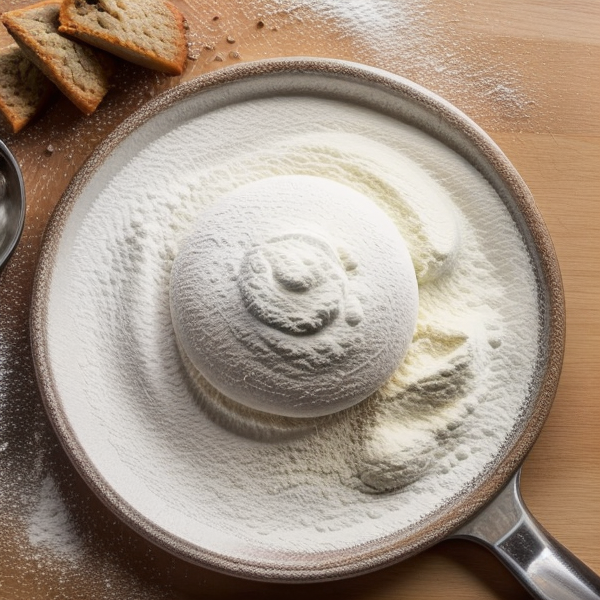The Science of Baking Soda and Baking Powder in Vegan Baking

Title: The Science of Baking Soda and Baking Powder in Vegan Baking
Introduction
Baking is an art that requires precision, creativity, and a deep understanding of the chemical reactions that occur between ingredients. For vegans, who do not use animal products such as eggs or dairy, it can be challenging to master the science behind leavening agents like baking soda (sodium bicarbonate) and baking powder. However, with a little knowledge and practice, you’ll be whipping up delicious vegan treats in no time!
What are Leavening Agents?
Leavening agents are substances that cause dough to rise by producing carbon dioxide gas. This gas forms tiny bubbles within the batter or dough, which expand during baking, causing the final product to become light and fluffy. There are two main types of leavening agents used in vegan baking:
1. Chemical Leavening Agents: These include baking soda and baking powder. They work by reacting with acidic ingredients (such as buttermilk, yogurt, or vinegar) to produce carbon dioxide gas.
2. Biological Leavening Agents: Yeast is a biological leavening agent that ferments carbohydrates, producing carbon dioxide gas as a byproduct. While yeast is not exclusive to non-vegan baking, it is commonly used in bread making.
Understanding Baking Soda and Baking Powder
Now let’s take a closer look at how baking soda and baking powder work their magic in vegan baking.
1. Baking Soda (Sodium Bicarbonate): When combined with an acidic ingredient, baking soda releases carbon dioxide gas, causing the dough to rise. In vegan baking, we often use vinegar, lemon juice, or buttermilk to provide the necessary acidity. The reaction between baking soda and these acids is relatively slow, so it’s important to incorporate air into the mixture while folding in the dry ingredients. This helps create a lighter texture.
2. Baking Powder: Baking powder contains both an acid (usually cream of tartar or sodium aluminum sulfate) and a base (usually sodium bicarbonate). When mixed with liquid, the acid and base components react, releasing carbon dioxide gas. However, unlike baking soda, baking powder also includes starches that absorb moisture and act as a buffer, delaying the release of carbon dioxide until the mixture reaches a certain temperature. This allows the baked goods to rise more quickly and evenly.
Tips for Using Baking Soda and Baking Powder in Vegan Baking
1. Use the correct amount of leavening agent: Overmixing or under-mixing can affect the overall texture of your baked goods. Always follow the recipe instructions carefully when measuring baking soda and baking powder.
2. Be mindful of acidity levels: Acidic ingredients help activate baking soda, while baking powder already has its own acid component. If you’re using a recipe that calls for both, make sure the acidity level is balanced. Too much acid can neutralize the leavening agent, resulting in a dense or flat final product.
3. Consider the temperature: Baking powder works best at room temperature, while baking soda needs heat to activate. Avoid adding either directly to hot liquids, as this can cause them to dissolve too quickly, reducing their effectiveness.
4. Test for doneness: Because baking soda and baking powder rely on chemical reactions, it’s essential to test for doneness. Insert a toothpick or wooden skewer into the center of your baked good; if it comes out clean, the item is fully cooked.
5. Store properly: Both baking soda and baking powder have a limited shelf life and can lose their potency over time. Keep them in a cool, dry place away from direct sunlight or moisture.
In conclusion, understanding the science behind baking soda and baking powder is crucial for creating successful vegan baked goods. By following these tips and experimenting with different recipes, you’ll soon become a pro at whipping up delicious, fluffy vegan treats!
